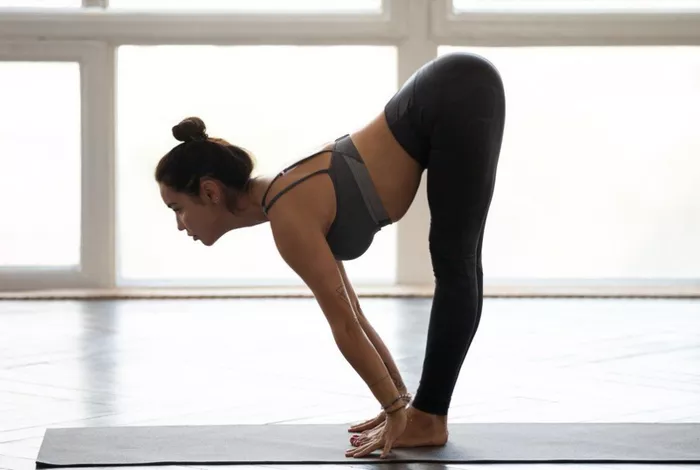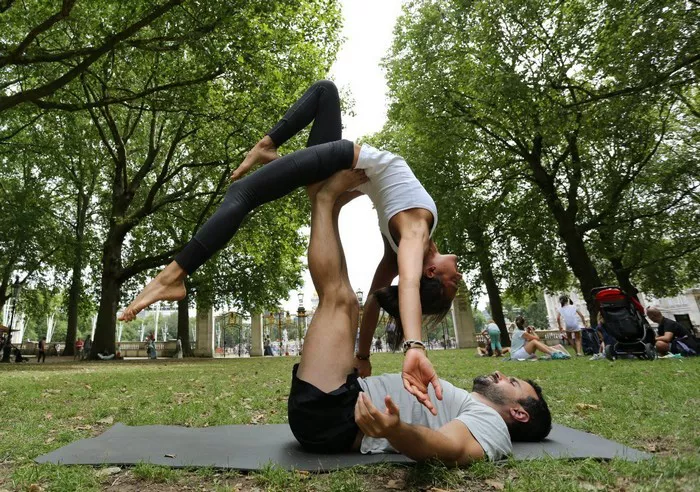Iyengar Yoga, developed by B.K.S. Iyengar, is a form of Hatha yoga that places a strong emphasis on precision, alignment, and the use of props. This discipline is designed to make yoga accessible to all practitioners, regardless of age or physical condition. Through deliberate and mindful movement, Iyengar Yoga offers a holistic approach to physical and mental well-being. This article provides a comprehensive exploration of how Iyengar Yoga transforms the body in both subtle and profound ways.
1. Enhances Postural Alignment
One of the most immediate effects of Iyengar Yoga is its impact on posture. Each pose, or asana, is designed to improve alignment by training the body to be aware of its own structural tendencies. Practitioners learn to align the head, spine, pelvis, and limbs in a harmonious way. Over time, this practice helps to correct imbalances, reduce strain on muscles and joints, and improve overall posture in daily life.
Benefits:
- Reduces slouching and spinal misalignment
- Promotes symmetrical muscle development
- Enhances the natural curvature of the spine
2. Builds Muscular Strength
Unlike dynamic forms of exercise that emphasize rapid movement, Iyengar Yoga builds strength through sustained, static postures. Each pose engages specific muscle groups and is held for a considerable duration, encouraging muscular endurance and stability. This deliberate method promotes the development of deep, intrinsic muscles often neglected by other fitness routines.
Key Areas Strengthened:
- Core muscles for better balance
- Back and spinal muscles for support
- Legs and arms through standing and balancing poses
3. Increases Flexibility
Iyengar Yoga’s focus on holding poses and using props such as blocks, straps, and bolsters makes it especially effective for increasing flexibility. The prolonged duration of each asana allows muscles and connective tissue to gradually release and lengthen. Regular practice loosens tight hips, hamstrings, shoulders, and other commonly stiff areas.
How Flexibility is Achieved:
- Props support the body to avoid strain
- Controlled breathing encourages muscle relaxation
- Consistent practice deepens range of motion
4. Improves Joint Health
Healthy joints require both mobility and stability. Iyengar Yoga ensures both by encouraging movements that lubricate the joints and strengthen the muscles around them. The precision involved in each pose minimizes the risk of injury and supports the long-term functionality of joints, particularly for those suffering from arthritis or other degenerative conditions.
Key Joint Benefits:
- Enhanced synovial fluid circulation
- Increased joint space through traction
- Decreased joint stiffness and inflammation
5. Boosts Circulatory and Respiratory Systems
The systematic approach of Iyengar Yoga positively impacts cardiovascular and respiratory health. Poses that open the chest and involve deep, rhythmic breathing improve oxygen uptake and heart function. Inversions and restorative poses also promote venous return, aiding circulation and detoxification.
Physiological Enhancements:
- Lowered resting heart rate over time
- Enhanced lung capacity and efficiency
- Improved blood flow to extremities and organs
6. Supports Digestive Function
Through the practice of twists, forward folds, and specific abdominal-focused postures, Iyengar Yoga helps in stimulating the digestive organs. This stimulation enhances peristalsis and promotes the release of digestive enzymes, leading to better nutrient absorption and elimination.
Digestive Benefits:
- Alleviates constipation and bloating
- Stimulates liver and kidney function
- Balances digestive fire (Agni) in Ayurvedic terms
7. Reduces Chronic Pain
A growing body of research supports the use of Iyengar Yoga in pain management, especially for conditions like lower back pain, neck pain, and migraines. The alignment-based approach corrects biomechanical imbalances that often lead to pain, while also promoting relaxation through the nervous system.
Common Conditions Addressed:
- Sciatica and lumbar discomfort
- Cervical spine tension
- Headaches due to muscular stress
8. Enhances Nervous System Function
Iyengar Yoga is not only about physical precision but also about cultivating a calm, focused mind. This balance has a profound impact on the nervous system. The practice reduces sympathetic nervous system activity (fight-or-flight) and enhances parasympathetic function (rest-and-digest), leading to better stress management and emotional regulation.
Neurological Benefits:
- Reduction in stress hormone levels
- Improved sleep quality
- Greater mental clarity and focus
9. Promotes Hormonal Balance
The endocrine system, responsible for hormone secretion, can be positively influenced by the regular practice of Iyengar Yoga. Poses that target glands such as the thyroid, adrenal, and pituitary help in regulating hormonal secretions. This leads to improvements in energy levels, mood stability, and metabolic function.
Hormonal Impact:
- Stabilizes menstrual cycles
- Reduces symptoms of menopause
- Enhances insulin sensitivity and metabolism
10. Fosters Mind-Body Awareness
Perhaps one of the most transformative aspects of Iyengar Yoga is its ability to cultivate deep awareness of the body and mind. Practitioners are encouraged to observe internal sensations, thought patterns, and breath dynamics. This mindfulness fosters a greater sense of embodiment and emotional intelligence.
Psychological Benefits:
- Heightened self-awareness
- Better emotional resilience
- Improved capacity for introspection
11. Aids in Injury Rehabilitation
Iyengar Yoga’s structured and prop-supported methodology makes it an ideal modality for injury recovery. Its slow, deliberate nature allows individuals to work around limitations while promoting healing and regaining functional mobility. Therapists often recommend Iyengar Yoga as a complement to physical rehabilitation.
Rehabilitation Applications:
- Post-operative mobility recovery
- Sports injury healing
- Rebuilding muscular imbalances
12. Improves Balance and Coordination
Many asanas in Iyengar Yoga are designed to challenge balance and spatial awareness. These poses develop proprioception, which is the body’s sense of its position in space. With improved proprioception comes better coordination, which is crucial for preventing falls and enhancing athletic performance.
Balance Training Techniques:
- Use of wall support for beginners
- Gradual removal of props as skill increases
- Emphasis on even weight distribution
13. Encourages Consistency and Discipline
The methodical structure of Iyengar Yoga classes promotes discipline and regularity. Practitioners are taught to follow sequences meticulously and reflect on their progress over time. This structure cultivates perseverance, patience, and a growth mindset that often extends beyond the mat into daily life.
Lifestyle Benefits:
- Development of healthy routines
- Strengthened willpower
- Increased patience and focus
14. Accessible to All Ages and Abilities
Iyengar Yoga’s inclusive design makes it suitable for individuals across all age groups and physical conditions. The intelligent use of props allows practitioners to modify poses according to their needs, ensuring both safety and efficacy. This universal accessibility is a key reason for its global popularity.
Key Accessibility Features:
- Props to support limited mobility
- Pose variations for different skill levels
- Therapeutic sequences for specific conditions
Conclusion
Iyengar Yoga is more than just a physical exercise; it is a deeply therapeutic and transformative practice that touches every system of the body. From structural alignment to hormonal balance, and from emotional regulation to rehabilitation, the benefits are comprehensive and well-documented. Through its precise methodology and mindful approach, Iyengar Yoga offers a powerful tool for anyone seeking to enhance their physical health and inner awareness.
By committing to this discipline, practitioners can expect not only improved physical capabilities but also a deeper connection to themselves. Whether you are a beginner or an experienced yogi, the journey through Iyengar Yoga offers profound rewards that extend far beyond the mat.
Related Topics:












